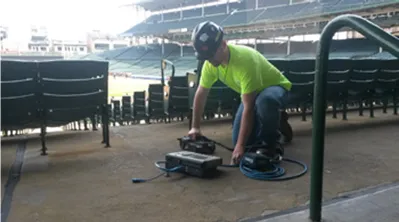Major structural problems have been identified in several bridges in Nepal.
March 1, 2012
Read time: 2 mins
Major structural problems have been identified in several bridges in Nepal. Construction work on seven large bridges in Nepal has been halted due to the problems arising in the pier construction.
Work has been stopped on bridges located at Ghurmi and carrying the Udayapur-Okhaldhunga road over the Sunkoshi River and at Khurkot carrying the Sindhuli-Manthali road over the Sunkoshi River. Work has also halted on a bridge in West Nepal carrying the Chnichu-Jajarkot road over the Bheri River, on the Tawa River bridge, the Siwai bridge, the Tadi bridge at Nuwakot and on the bridge over the Junga River at Dhanusa.
A bridge expert in Nepal says that due to geological conditions in Nepal, pier construction faces problems. The expert suggests that bridges with piers should be avoided in the country and that arched structures, though more expensive to build, are more suitable for the country's rugged terrain and would offer long term cost benefits through reduced maintenance needs.
Pier problems at the Bheri Bridge have resulted in it being replaced by a suspension bridge and this has been suggested as another suitable bridge design solution for the country. The issue is endemic, with the country's geology and geography playing a key role. Bridge scour is a serious problem in Nepal, due to the country's mountainous terrain, deep rock valleys and fast flowing rivers.2664 Nepal's Department of Roads has issue a notice that a further seven bridges are in a serious condition and require repairs.
Bridges requiring repair are at Mugling carrying the Prithvi Highway, the Marsyangdi Bridge carrying the Aanbukhaireni-Gorkha road, the Seti bridge carrying the Khaireni-Bhimad road, the Jharahi bridge carrying the Mahendra highway and the Kaligandaki bridge carrying the Siddhartha highway. The other structures are the Bheri bridge carrying the Ratna highway, the Tamakoshi bridge carrying the Lamosanghu road, the Sunkoshi bridge carrying the Lamosanghu - Jiri road and the Tadi bridge carrying the Pasanglamhu road.
Work has been stopped on bridges located at Ghurmi and carrying the Udayapur-Okhaldhunga road over the Sunkoshi River and at Khurkot carrying the Sindhuli-Manthali road over the Sunkoshi River. Work has also halted on a bridge in West Nepal carrying the Chnichu-Jajarkot road over the Bheri River, on the Tawa River bridge, the Siwai bridge, the Tadi bridge at Nuwakot and on the bridge over the Junga River at Dhanusa.
A bridge expert in Nepal says that due to geological conditions in Nepal, pier construction faces problems. The expert suggests that bridges with piers should be avoided in the country and that arched structures, though more expensive to build, are more suitable for the country's rugged terrain and would offer long term cost benefits through reduced maintenance needs.
Pier problems at the Bheri Bridge have resulted in it being replaced by a suspension bridge and this has been suggested as another suitable bridge design solution for the country. The issue is endemic, with the country's geology and geography playing a key role. Bridge scour is a serious problem in Nepal, due to the country's mountainous terrain, deep rock valleys and fast flowing rivers.
Bridges requiring repair are at Mugling carrying the Prithvi Highway, the Marsyangdi Bridge carrying the Aanbukhaireni-Gorkha road, the Seti bridge carrying the Khaireni-Bhimad road, the Jharahi bridge carrying the Mahendra highway and the Kaligandaki bridge carrying the Siddhartha highway. The other structures are the Bheri bridge carrying the Ratna highway, the Tamakoshi bridge carrying the Lamosanghu road, the Sunkoshi bridge carrying the Lamosanghu - Jiri road and the Tadi bridge carrying the Pasanglamhu road.








